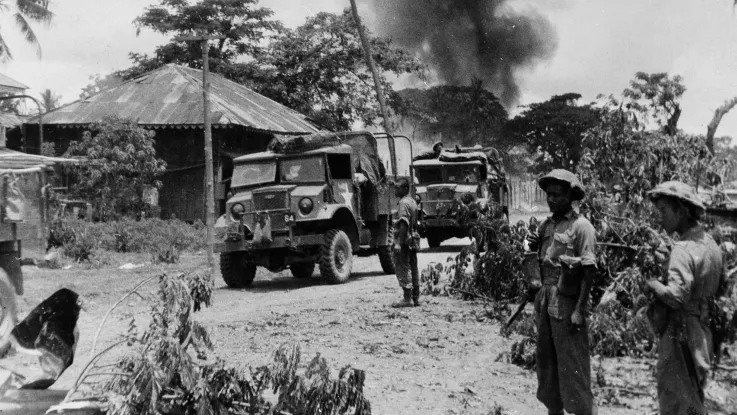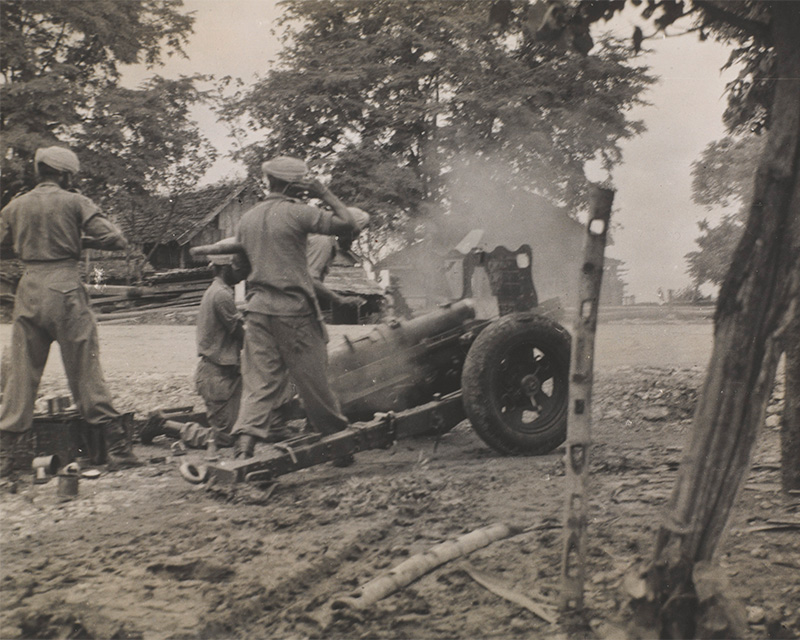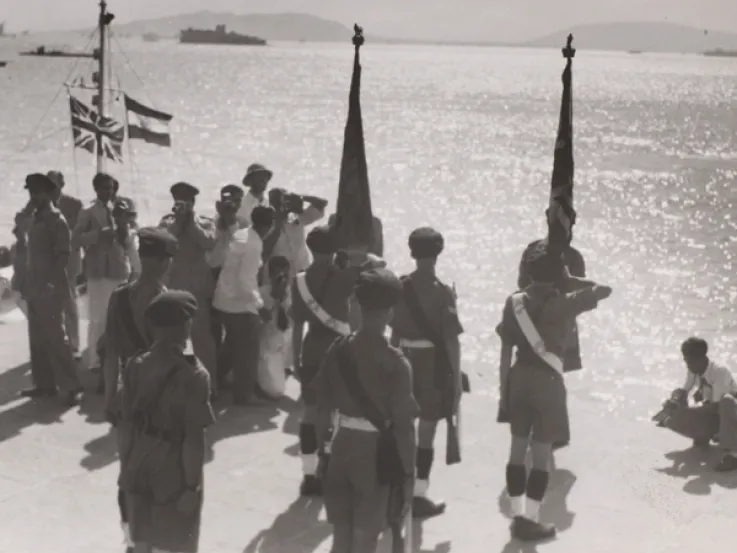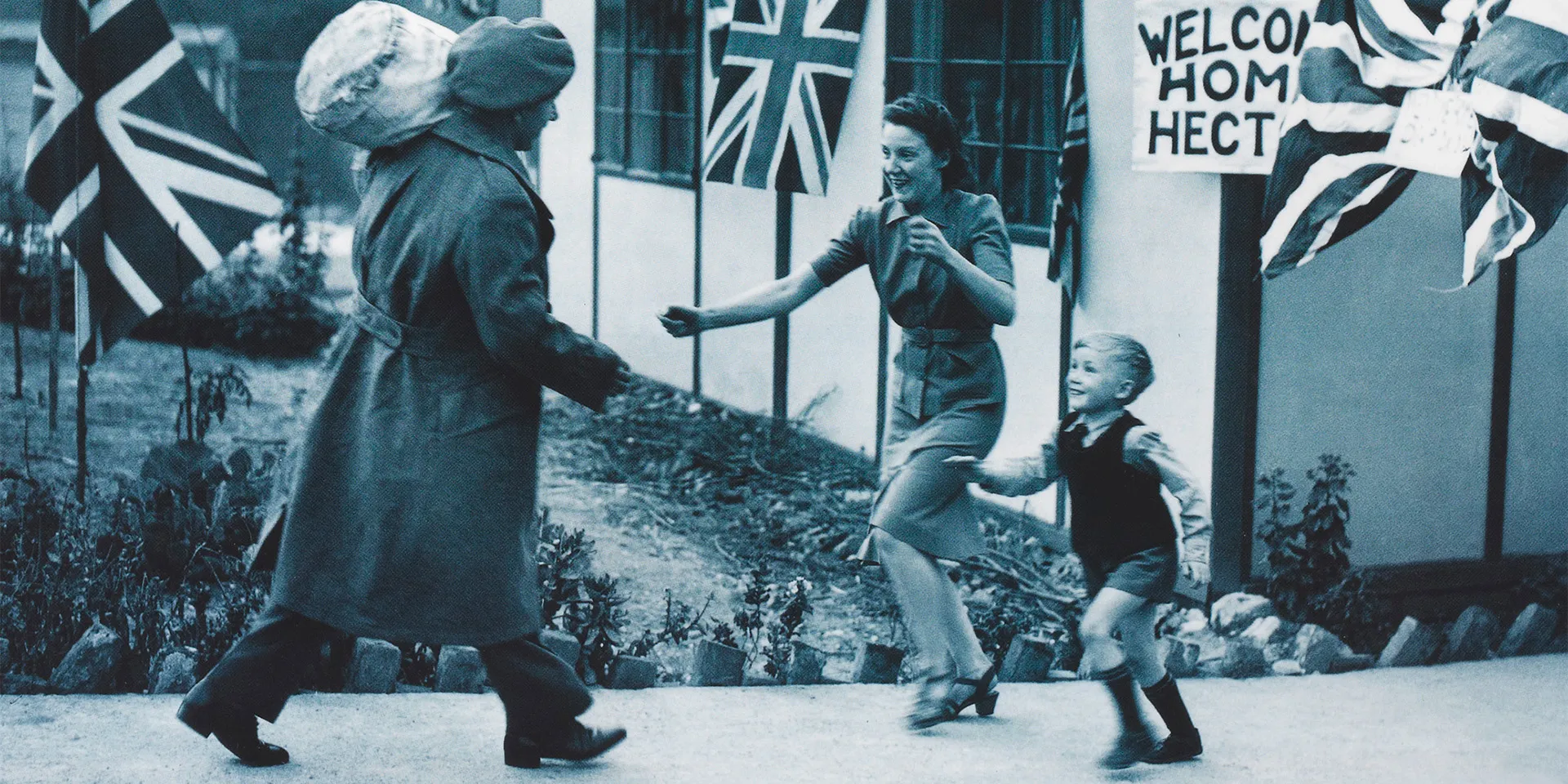
Former prisoner of war returning home from East Asia, October 1945
A long campaign
From December 1941 to August 1945, British, Commonwealth and Empire troops fought a fierce war against the forces of Imperial Japan across Asia.
Following initial defeats in Singapore, Burma (now Myanmar) and Malaya (now Malaysia), the fightback began in 1943. The Fourteenth Army’s spirited rearguard at Imphal and Kohima in north-east India set the foundation for an offensive that would eventually recapture Burma in 1945.
The British and Indian counterattack was accompanied by American, Australian and Chinese campaigns against Japan. After US forces conquered the islands of Iwo Jima (February-March 1945) and Okinawa (April-June 1945), the Allies prepared for a full-scale invasion of the Japanese mainland.
The Nuclear Age
On 6 August 1945, the USA dropped an atomic bomb on the Japanese city of Hiroshima, bringing mass death and destruction. Three days later, a second atomic bomb was dropped on Nagasaki. These two strikes killed more than 150,000 people.
On the same day as the US attack on Nagasaki, the Soviet Union invaded Japanese-occupied areas of north-east China.
In the face of such unprecedented destruction, and contemplating certain defeat, the Japanese government communicated on 10 August its intention to surrender. The news quickly inspired celebrations around the world, including in London, where Allied soldiers danced with civilians in the streets.
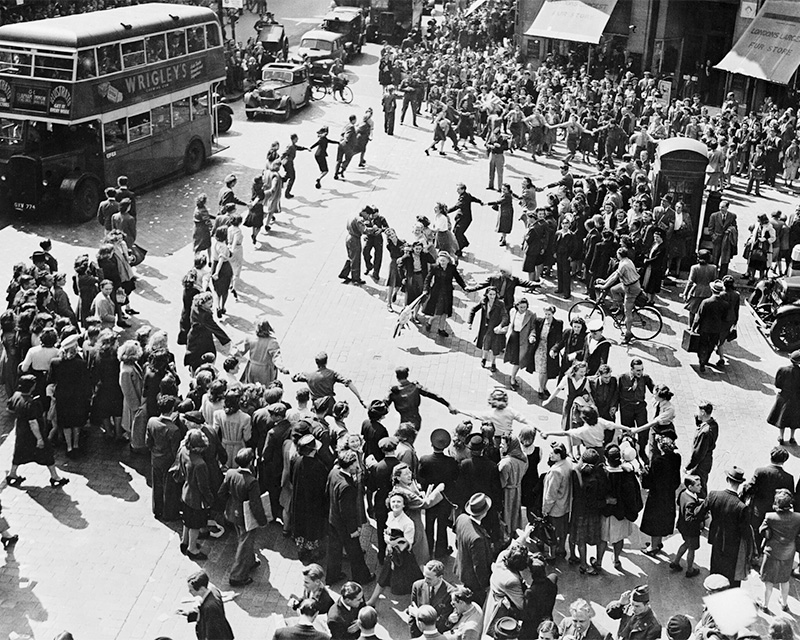
Celebrations in London, August 1945 (Image courtesy of IWM)
Victory
After several days of discussions, the Japanese government took the first formal steps towards surrender on 14 August 1945.
At midnight, Prime Minister Clement Attlee delivered a radio broadcast informing the British public that Japan had surrendered unconditionally and that the Second World War was over. The late hour of his address meant that many people first discovered the news when reading the following morning’s headlines.
In Britain, and across the Empire, 15 August was declared Victory over Japan Day (VJ Day). A two-day public holiday was announced, allowing soldiers and civilians to celebrate the Allies' triumph.
For many British troops in Europe, there was relief at the realisation they would not be redeployed to Asia. Others reflected upon the huge sacrifices of the last six years. For the thousands of British prisoners of war still detained in Japanese camps, news of the surrender was often significantly delayed.
‘Japan has today surrendered. The last of our enemies is laid low. Taking full advantage of surprise and treachery, the Japanese forces quickly overran the territories of ourselves and our allies in the Far East and at one time it appeared as though they might even invade the mainland of Australia and advance far into India. But the tide turned, first slowly then with an ever-increasing speed and violence as the mighty forces of the United States and of the British Commonwealth and Empire and of their allies and finally of Russia were brought to bear.’Prime Minister Clement Attlee’s address to the British people — 15 August 1945
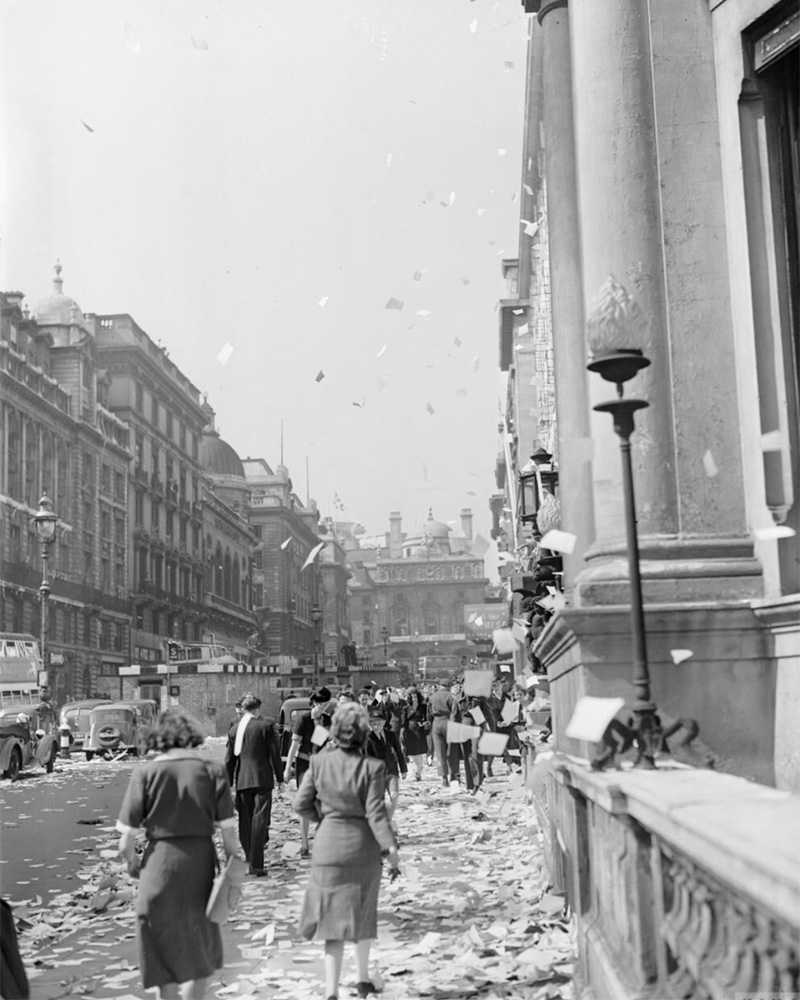
VJ Day, London, 15 August 1945 (Image courtesy of IWM)
Celebrations
VJ Day coincided with the State Opening of Parliament in London, where huge crowds lined the route to cheer King George VI and Queen Elizabeth on their way to Westminster.
A hastily amended King’s Speech began with a note of gratitude:
‘The surrender of Japan has brought to an end six years of warfare which have caused untold loss and misery to the world… My Armed Forces from every part of my Commonwealth and Empire have fought with steady courage and endurance. To them as well as to all others who have borne their share in bringing about this great victory and to all our Allies our gratitude is due.’
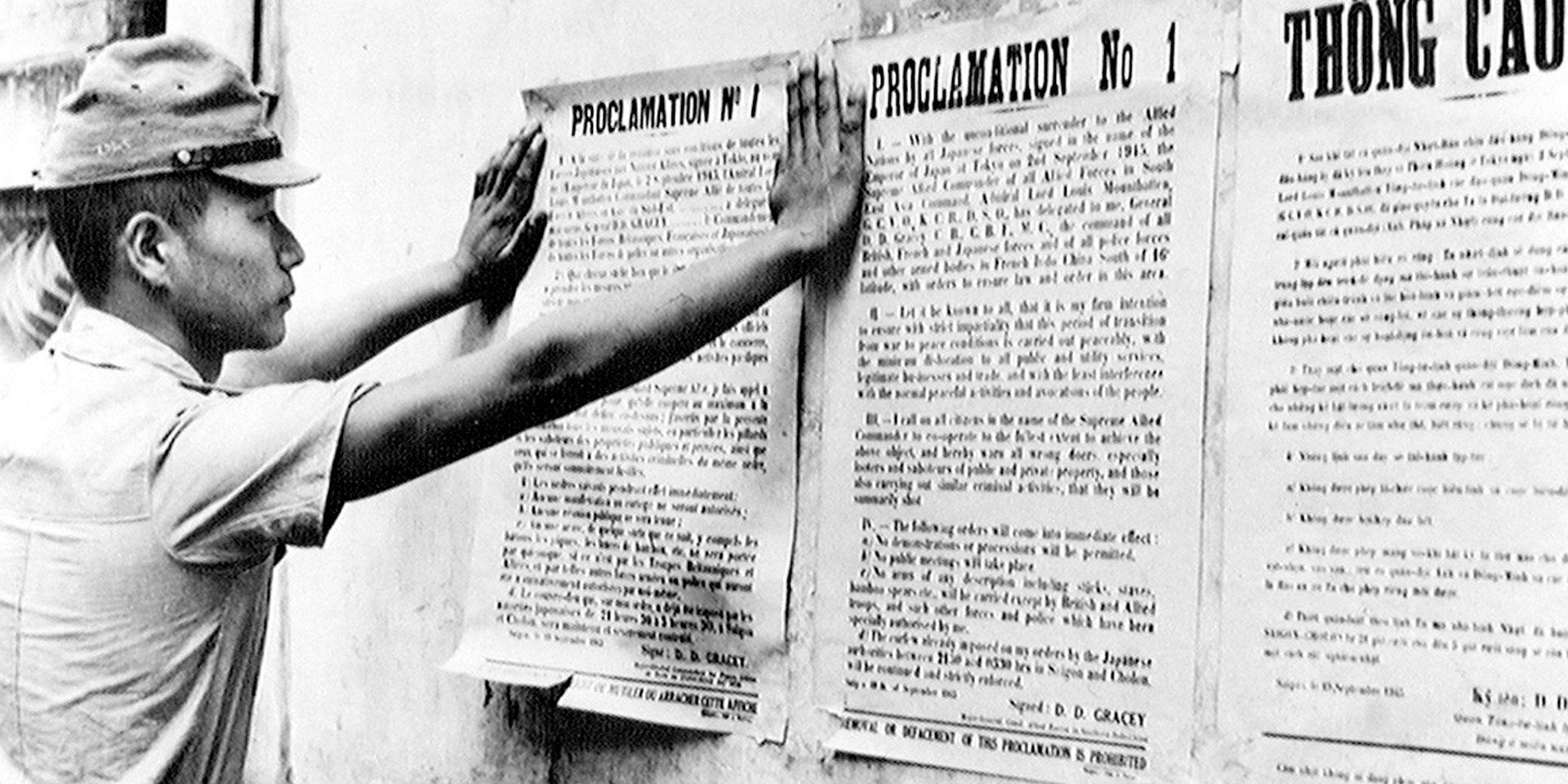
A Japanese soldier reads a poster describing arrangements for the Allied military occupation of Japan, 1945
Surrender
The Japanese Instrument of Surrender - a formal document outlining the precise terms of Japan’s capitulation and the cessation of hostilities - was signed aboard the USS ‘Missouri’ on 2 September 1945. (The USA celebrates VJ Day on this later date.)
In the weeks that followed, Allied forces instigated an American-led military occupation of the Japanese mainland that involved Commonwealth soldiers.
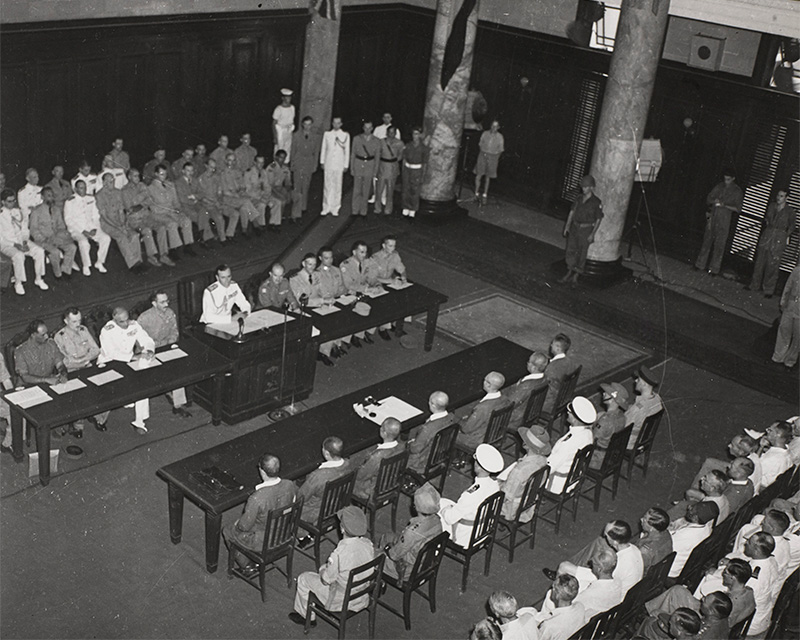
Lord Louis Mountbatten reads the surrender terms to the Japanese in Singapore, 12 September 1945
Enduring conflict
During the Second World War, Japanese forces had conquered numerous territories throughout East and Southeast Asia. In August 1945, the rapid collapse of the Japanese Empire created a power vacuum as the future of the region hung in the balance.
After VJ Day, British and Indian Army soldiers were tasked with reasserting control over Britain’s former colonial possessions, including Hong Kong and Singapore. In some cases, national independence movements contested the restoration of imperial rule.
In Malaya, pro-independence forces resisted the return of Britain as a colonial power – eventually resulting in the open warfare of the Malayan Emergency (1948-60). In Burma, the British governor was returned to power in October 1945 and began attempts to rebuild a shattered nation. Yet an increasingly powerful Burmese independence movement brought about the end of British rule in January 1948.
Following the defeat of Japan, British and Indian Army forces also became involved in colonial wars in French Indochina (now Vietnam, Cambodia and Laos) and the Dutch East Indies (now Indonesia), where independence movements seized their chance to overthrow French and Dutch colonial rule respectively.
With France and the Netherlands unable to muster military forces adequate to reassert their own power, British and Indian troops were deployed on behalf of Britain’s European allies. To support their offensive, thousands of Japanese soldiers taken prisoner during the Second World War were released and re-armed to fight alongside their former enemies.
Cold War
After Japan's defeat, Asia also emerged as an important theatre in the early stages of the Cold War. The national independence movements in Malaya, French Indochina and the Dutch East Indies were spearheaded by communists.
In Korea - a territory which had been occupied by Japan for several decades prior to 1945 - the Soviet Union and the USA shared responsibility for a transitional military government in the north and south respectively. By 1948, as the rivalries of the Cold War intensified, two separate nations were formed.
Two years later, the outbreak of the Korean War (1950-53) would see British Army troops deployed in defence of South Korea against Soviet-backed North Korea.
War without end?
The succession of local and regional conflicts that emerged across East and Southeast Asia in the aftermath of Japan’s defeat were complex and multifaceted. In many cases, British, Commonwealth and Empire troops took an active part in the fighting, with several thousand British and Indian soldiers losing their lives in Malaya and the Dutch East Indies.
For the soldiers and civilians involved in these conflicts, there was little indication that the events of August 1945 had brought an end to the war.
Their experiences during the late 1940s and early 1950s challenge the conventional idea that 1945 marks a conclusive end point of the Second World War. Instead, we are reminded of the remarkable breadth of this truly global conflict, including the forgotten fighting that formed part of its ragged end.
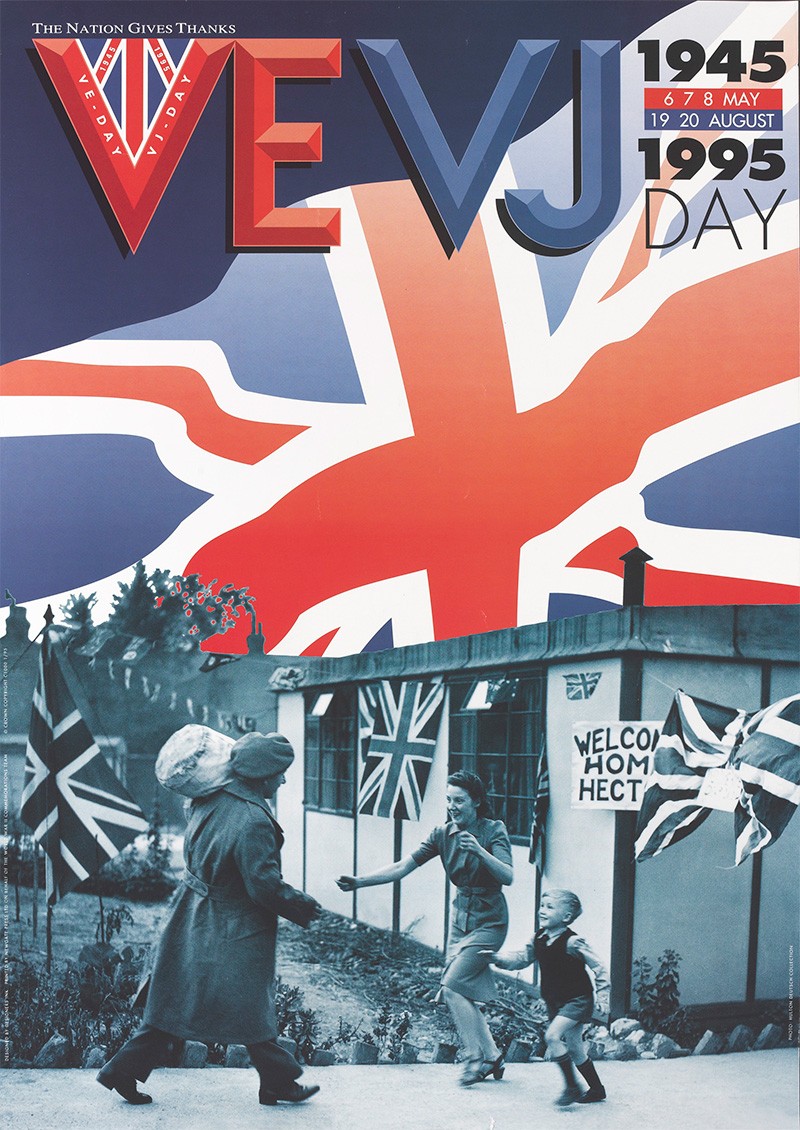
VE/VJ Day 50th anniversary poster, 1995
Remembrance
VJ Day remains a prominent part of Britain’s annual remembrance commemorations. On 15 August, soldiers, veterans and civilians come together each year to reflect upon the tremendous sacrifices involved in securing the defeat of Japan.


